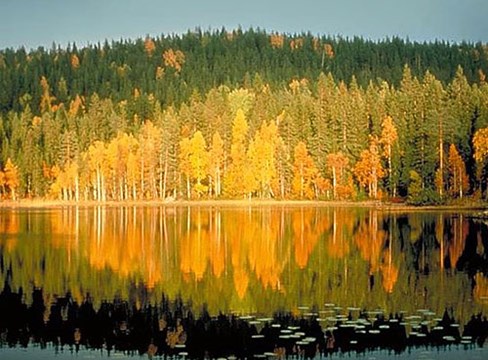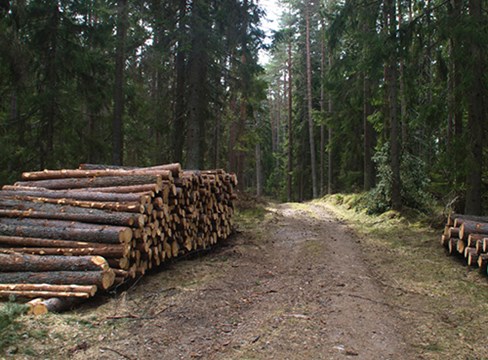Sustainability
Managing the Forests for Sustainability
Sustainable forest management is not just about preserving the quantity of forests for future generations, it is also about respecting the biological diversity of the forests, the ecology of the species living within it, and the communities affected by the forests. Sustainable forest management will, in other words, maintain the balance between economic wood production and respecting wildlife and vegetation, outdoor recreation, employment and local interests.
About 100 years ago Sweden introduced forestry legislation that limited the amount of timber that could be harvested, and imposed an obligation on woodlot owners to carry out regeneration after felling, contributing to sustainable management. Sustainable forestry ensures an increase in the stock of growing wood – for each tree that is cut down at least two new ones are planted. Since then forest resources have doubled. Forest policy places equal emphasis on environment and wood production.
Forest a renewable raw material resource.
Modern Sustainable Forest Management
Swedish forest management is moving towards methods that enhance natural processes and produce authentic forest structures which are environmentally appropriate, socially beneficial and economically valuable.
Site-specific forestry takes into consideration the varying conditions of the individual site. This ensures greater variety and minimizes negative effects on animal and plant life. Major resources are being committed to conservation, education and development. The forest worker of today is a skilled and environmentally conscious professional. Protected zones are left untouched on the banks of waterways, old trees are saved and dead wood is left in the forest. One consequence of this awareness is that large scale clear-cutting is almost entirely abandoned today. It is estimated that the large industrial forest enterprises now leave some 10% of the potential harvest standing for ecological reasons.
Sweden enjoys a high level of forest protection. About 4 million hectares of productive forest land are formally protected as national parks, nature reserve habitat protection areas and nature conservation agreements.
Reforestation - Tough Protection
The Swedish forest industry knows that its future is linked to the protection and expansion of its forests. This, in combination with strong, effective laws, ensures more trees are planted than harvested. Ever since 1903, the mandatory requirement for regeneration after felling has had a central role in Swedish legislation. Annually 170 000 hectares are planted with some 370 million seedlings.
Natural regeneration occurs in about 50 000 hectares. The Swedish Forest Agency continuously monitors the results of the forest regeneration.



